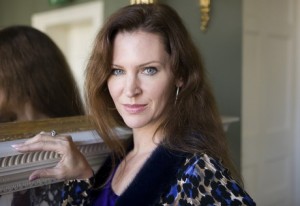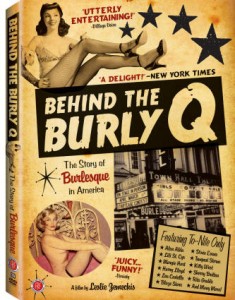 Disc Dish recently spoke to Leslie Zemeckis, director of Behind the Burly Q (DVD
Disc Dish recently spoke to Leslie Zemeckis, director of Behind the Burly Q (DVD $24.99, First Run Features, released on April 12, 2011), a documentary that looks behind the scenes of the burlesque industry, the popular entertainment vaudevillian entertainment that thrived during the fist half of the 20th century. The film primarily focuses on the men and women who performed on the burlesque circuit — the dancers, comedians, singers and musicians who took to the stage to entertain the masses at a time when they needed it (i.e. The Great Depression, World War II, etc.).
DD: So, why a documentary about burlesque?
LZ: In 2005, I was doing a burlesque-inspired show in Los Angeles [entitled Staar], and I became fascinating by the burlesque world, particularly the dancers and their lives on the road. I don’t think people today understand just how substantial burlesque entertainment was at one time. The dancers, the comedians — it was good-spirited adult entertainment performed by adults. More importantly, I wanted to learn about what happened to the performers when burlesque faded away.
DD: Behind the Burly Q is filled with so many amazing interviews with one-time burlesque performers, including Tempest Storm, Candy Cotton and even Alan Alda (TV’s M*A*S*H), whose father Robert was a burlesque comic. Tell us about jumping in to all that kind of face-to-face research.
 LZ: It was a job all right. For some people, it took six months to get them to talk to me. But I had Tempest Storm and Alan Alda early on, and they were good selling points. I actually didn’t think so many of the performers would still be alive, but they were, and once they heard about what I was doing, many of them contacted me. But we traveled around the country for more than two years getting everyone we could find. We even made it down in the Louisiana bayous two years after Hurricane Katrina trying to track down Kitty West.
LZ: It was a job all right. For some people, it took six months to get them to talk to me. But I had Tempest Storm and Alan Alda early on, and they were good selling points. I actually didn’t think so many of the performers would still be alive, but they were, and once they heard about what I was doing, many of them contacted me. But we traveled around the country for more than two years getting everyone we could find. We even made it down in the Louisiana bayous two years after Hurricane Katrina trying to track down Kitty West.
DD: You seem to have really enjoyed interviewing all the talent that we see in the film.
LZ: Oh yes! Oh yes! I jumped in feet first and loved it. I wanted to do the whole gamut, including all the interviews. After the first few interviews, I could see that they all wanted to tell their stories, and some of them had never had a chance to do so. And there were all kinds of stories — funny ones, pleasant memories and some that were not so nice. But that’s the way it was for some, and I’m glad we got a chance to hear them. There was one interview in particular where the woman at the outset said, “I have a half-hour.” I think she just wanted to give herself an out in case it got too uncomfortable for her. But it went fine.
DD: Sounds like you went from someone who was a little curious about burlesque to becoming a big fan, or at least a supporter of those who made it happen.
LZ: It’s definitely a subject that just grabbed me. Burlesque is naughty, not nasty, and the heart of it comes down to the economic times during its rise. When times were tough and Broadway shows in New York were closing, it was burlesque that kept the people entertained. The performers all loved to be up on that stage — they just loved what they were doing. And it was a time when women in particular had fewer choices then they do today, and for a lot of them, doing a striptease in a burlesque show kept them alive and well.
Leave a Reply